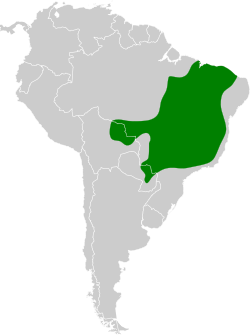| Saltatricula | |
|---|---|
 | |
| Many-colored Chaco finch (Saltatricula multicolor) | |
| Scientific classification | |
| Domain: | Eukaryota |
| Kingdom: | Animalia |
| Phylum: | Chordata |
| Class: | Aves |
| Order: | Passeriformes |
| Family: | Thraupidae |
| Genus: | Saltatricula Burmeister, 1861 |
| Type species | |
| Saltatricula multicolor Burmeister, 1861 | |
| Species | |
2, see text | |
Saltatricula is a genus of South American seed-eating birds in the tanager family Thraupidae.



